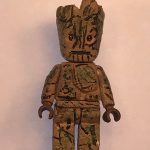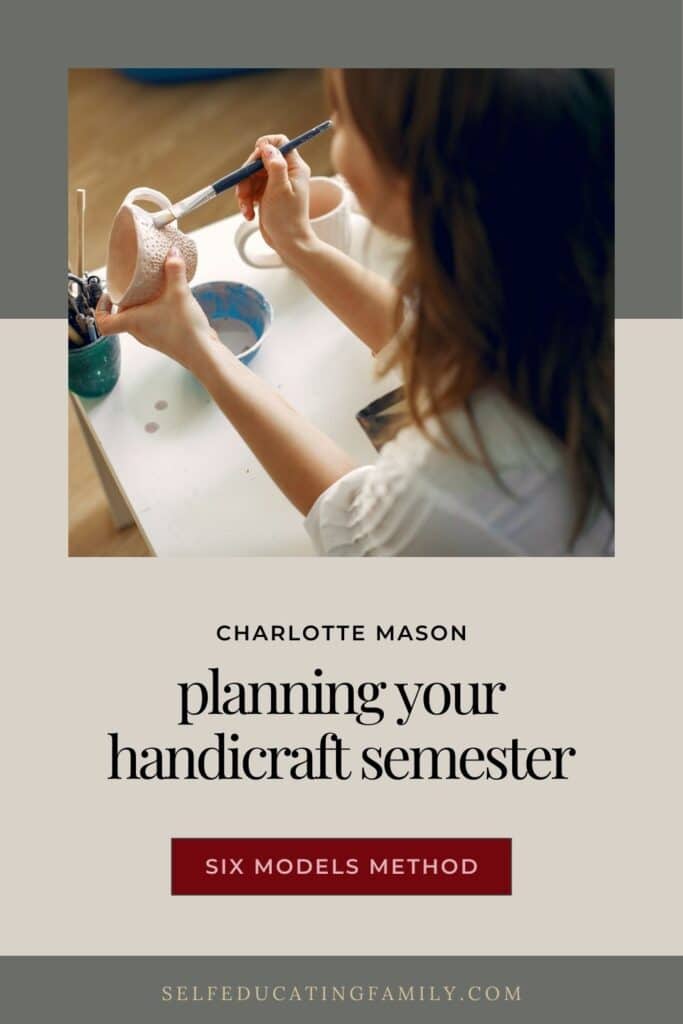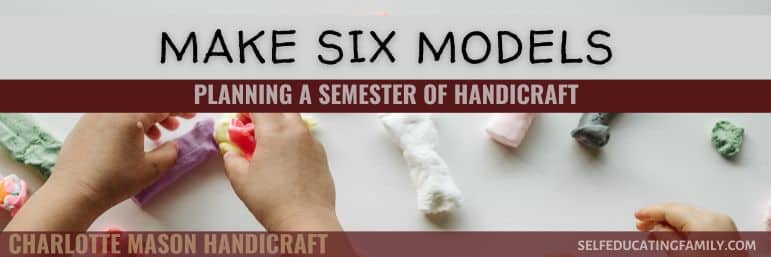What’s inside? For semester planning: Charlotte Mason schools often had children “make six models” by the end of a semester. What can we glean from what these students were doing? And how can this revolutionize your homeschool this semester if you learn this handy trick?
This post may contain affiliate links. If you find my content valuable and make a purchase through one of my links, I will earn a commission at no cost to you, which helps me keep this blog going so I can help you even more! I recommend products I trust and/or use myself, and all opinions I express are my own. Read the full disclaimer here.
Semester Planning for handicraft: Make six models
While researching how Charlotte set up handicraft and some of the other subjects in the PNEU programmes, you will notice that often the semester would end with a few weeks of oral examinations, recitations, and display of the children’s models that they made during the year. It’s notated as “Make six models” and sometimes references a book that was used for the semester, like Bent Iron Work, by F. J. Erskine.
Bent iron work, by the way, is cold-forming metal into useful shapes, usually starting with thin iron strips. Paul Hasluck, author of Bent Iron Work: Including Elementary Art Metal Work, calls it “light blacksmithing” and shows exercises on how to make candlesticks, grilles, screens, frames, and the like.
Why Six?
Six models or six things to learn is a very useful target for homeschooling, especially if you are on the semester or trimester rhythm.
Think of it – six models, all increasing in complexity, over 12 or 18 weeks. Average? 1 new model every couple of weeks. It’s enough keep challenging, and it’s enough to be interesting.
Of course, in handicraft, it isn’t about the end product, it’s about learning the process and gaining confidence in yourself as you learn the materials, tools, and techniques.
But a target model really helps to get the big picture of what you are trying to do.
So working with a 12-week semester or an 18-week trimester can help you organize your homeschool.
How can six models help with semester planning?
Once you select a handicraft, here are some tips to help you plan and schedule. Be sure to get all (or most) the equipment and materials at the beginning of the term.
- Aim for six models that will be the right level of skill development for your child.
- Allow 2 or 3 weeks to work on the new skill until a model can be made.
- The easier models may go very quickly as you build skills – be sure the skills are being carefully developed – no slipshod work.
- The more difficult models may take longer.
- Be sure not to do the work for the child. A good practice is to demonstrate the model yourself,
Remember, you must stay within the child’s “compass” – the new skills must be that right level of challenging enough without being too difficult that it causes frustration. That is the parent’s or teacher’s challenge!
The child may surprise you with what they can do – either not as much as you thought, or way more. Take it one model at a time and observe your child as they work on the skills.
Why this works
As the child is working new skills with their hands, they are learning and processing things inside their heads. They are making connections with all of the things they’ve learned before now.
It’s an example of the “science of relations”. For instance, if the child is learning hand embroidery, they may think of the tapestries that they learned about in medieval history. Or the handkerchiefs that Laura embroidered for her sister in the Little House books. While working with his hands, the child brings these experiences into his inner world and makes the connections or relations between other things that he’s learned.
Then at the end of the semester, as you review a child’s models, the child revisits each model and sees his own progress and skill that has developed.
The time frame of a term is small enough that it’s not too much to learn at once. And then each semester builds on the ones before. This is especially true of handicraft subjects that are repeated, as in cooking, gardening, or household repairs & maintenance.
Semester planning with Learn Six Models Method
Here are some examples of the “Learn Six Things” Method or “Make Six Models” idea in broad terms.
Example 1: Shakespeare
Shakespeare isn’t handicraft, of course, (unless you make your own DIY bookmarks for the term), but I’ve included it because the term can be conveniently divided into 12 or 18 weeks with six lessons as you read a Shakespeare play.
Since the plays are 5 Acts long, they divide easily into a semester with an extra week for introduction and one for wrap-up. So your semester planning is easy with six “models”, or in this case, lessons.
Example 2: Weeds
Nature Study and Botany are excellent subjects to divide up this way. Use the “learn six” method each semester as you do nature study.
If your subject is “Weeds”, pick six common weeds in your area. Learn a new one each 2 weeks. Then move on to a different subject, like trees. It’s hard to run out of subjects, really.
My local six “weeds” that we’ve come to know and love are: dandelion, mullein, plantain, purslane, and mallow. Plus one I actually dislike – bindweed. We can identify them by sight, know their medicinal uses (if any), know how to feed them to the chickens, and sort of draw them if we were hard pressed. You might get better at that than we did.
For trees in my area, we selected Blue Spruce, Cottonwoods, Aspen, Ash, and some of the local suburban common trees. When we lived in the East Coast, we could recognize Sugar Maples, Oaks, and other trees that were common to that area.
Stick to the ones you see and that are in your area first.
In Charlotte Mason’s time, children in Form I (age six) were asked at the end of the year to “Gather three sorts of tree leaf-bud and two sorts of catkin and tell all you can about them.”
Example 3: Cooking
In Teaching Cooking Skills to My Kids, I suggest a broad intro to cooking using six skill areas.
But that’s not the only way to do cooking. In fact, if that were used as a handicraft for a semester, I would follow it up with any one of those topics in more detail. Or do a related cooking topic in any area of interest.
Let’s say your kids enjoyed the section on bread. Maybe they’d like a whole semester of bread. Here’s six quick ideas off the top of my head:
- Quick Breads (like pumpkin bread)
- Yeast Breads
- Sourdough Breads
- Biscuits
- Popovers
- Flat breads
Or maybe they want to work on quick breads the whole semester — planning six models is easy!
- Pour type:
- Waffles or pancakes
- Funnel cakes
- Drop type:
- Banana bread or muffins
- Cast iron corn bread
- Dough type:
- Biscuits (as in biscuits and gravy)
- Traditional scones
There’s so much you can do with a semester of cooking as handicraft. You could even focus on foods from a particular country or time period. We have a cookbook of “Lewis and Clark”. You could theme the handicraft on international cooking and link it to any country you are focusing on in your readings. Some fiction books have their own cookbooks like the Redwall Cookbook (try the Veggible Molebake) or Roald Dahl’s Revolting Recipes (I’m not sure if you should try the Fresh MudBurgers).
Just remember to keep building skills: as your first-grader learns to mix and measure, your high schooler can hone knife skills and take on the science of cooking and baking.
Try to find a theme and pick six recipes or techniques to learn. Expect that your older kids may take it upon themselves to try making new recipes like the ones you’ve learned.
Example 4: Clay Modeling
My son started doing clay modeling to make his own miniatures. He started by “improving” Lego minifigures with his own designs by adding clay to the minifig.

You can explore the topic by selecting gradually more difficult models or give an introduction to the topic by exploring different types of clay. Clay is good because it allows curves and helps the child “see” the beauty of the forms he creates.
Here’s some ideas for models:
- Earrings
- Small animals or birds
- Caterpillars
- Paintbrush holder
- A coil pencil holder
- Small plant dish (goes under an indoor plant pot)
You can get more ideas on Sculpey or Michael’s.

For more ideas
Get more ideas for selecting which handicraft to teach, like woodworking, quilling, or the lost skills of sewing, candle making or soap making. There are lots of subjects to choose from.







